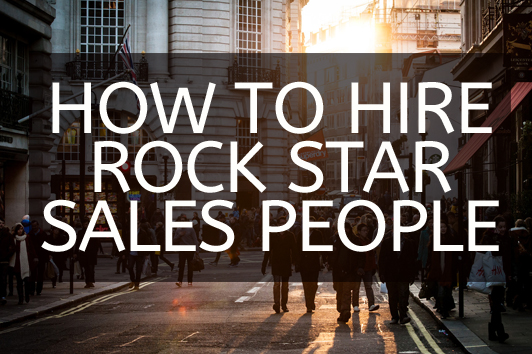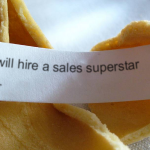Corey, a new but eager sales consultant recently asked me at a workshop I was conducting what should he leave for someone when cold calling and they say they’re busy so just leave some information.
It’s best to leave nothing! How often have any of us had someone call on us in the office and we tell them, “I’m very busy, can you just leave your information” and actually stopped and read it?
Leaving information is the most common form of the friendly but meaningless blow off. To the salesperson making walk in cold calls (canvasing), to get someone to even acknowledge us often feels like a positive for the day but make no mistake, it is in almost every case nothing but a rush out the door.
What should you do instead? First of all, there are times when just walking in cold is OK. Most often it is a huge waste of time but if you are going to do it, here are a few things that might help;
1) Acknowledge what they are thinking. Tell them you know how excited they must be to get yet another walk in from a salesperson! That’s right! Just say it! They are thinking it anyway and they may give you a bit of credit for at least being honest. You are bringing in the human factor. It is important to stop with the sales lines and get down to just having a light way of breaking the ice.
- If they do ask you to leave something. Ask them, “I appreciate that but honestly, if you’re anything like me, when I ask someone to leave something or send something, I usually am not really interested but it’s the nicer way to say no. Rather then that, would you mind if I ask you just 2 or 3 questions and at that point if it really doesn’t make any sense, I will get out of your way and no need for the games. What do you think?”
The same will apply on the phone. When cold calling you need to do a few things that will help your call be more successful. Again, cold calling is not to the optimal way to build your business but if you are doing cold calls on the phone, lets try to get some more success. It is all about being real, bringing in the human factor.
 First of all, stop calling with some lame introduction like, “Hi this is Jim from ABC manufacturing, how are you today”?? Seriously! That line alone will get a hang up. Or even “ Hi this is Jim from ABC Manufacturing, who is in charge of purchasing equipment?”
First of all, stop calling with some lame introduction like, “Hi this is Jim from ABC manufacturing, how are you today”?? Seriously! That line alone will get a hang up. Or even “ Hi this is Jim from ABC Manufacturing, who is in charge of purchasing equipment?”
In this day and age, we should be embarrassed to call anyone and not have done some level of research before picking up the phone. You need to find out who the person is that you need to speak to by doing a little detective work. Google is a wonderful tool, don’t ya think? Additionally your research should also consist of some reason that you’re calling. Look on their website, read up on them in the local publication, etc. You need a reason to call.
Second, if you are going to call even with the research you’ve done, you need to pull back. Give them an out. Yep, that’s right, an out. Why? Because they have one anyway and they are much less likely to hang up if you tell them it’s OK to do so.
Yes people, selling today is about being Human! Forget all of the lines and fancy tricks. Tell them the reason you’re calling is because you read on their website that they are doing (fill in the blank) and since you work with companies in that area you thought it might make sense to talk for a few minutes, and ask just a couple of questions to see if it does but you may have no need at all and if that is the case, we can hang up, no harm, no foul.
Remember make this your own. Put it into your own words but don’t forget, if you act like a salesperson, you will be treated like one. If you act like just another business person with some credibility, you will also be treated like one!

















